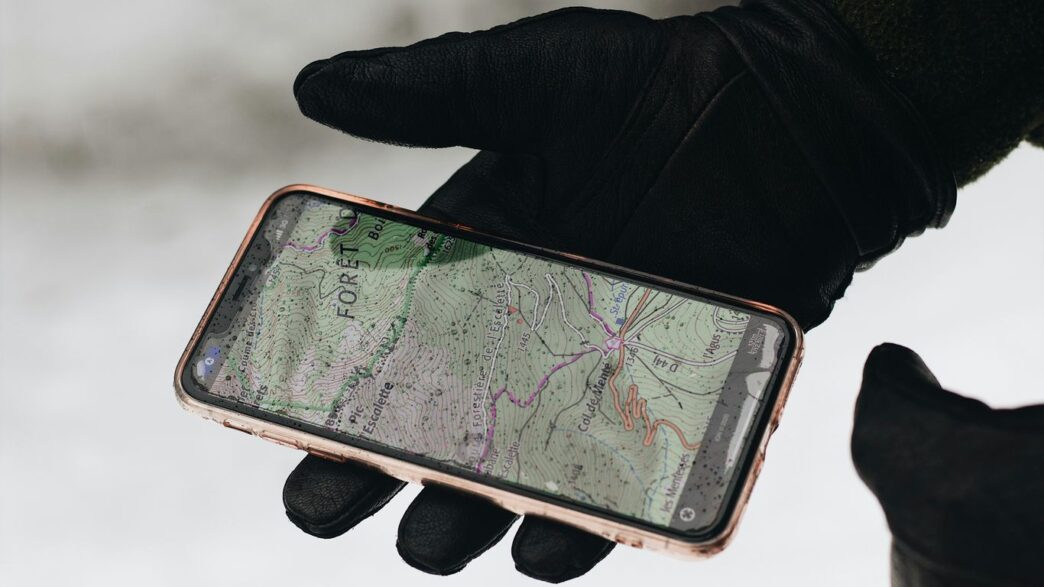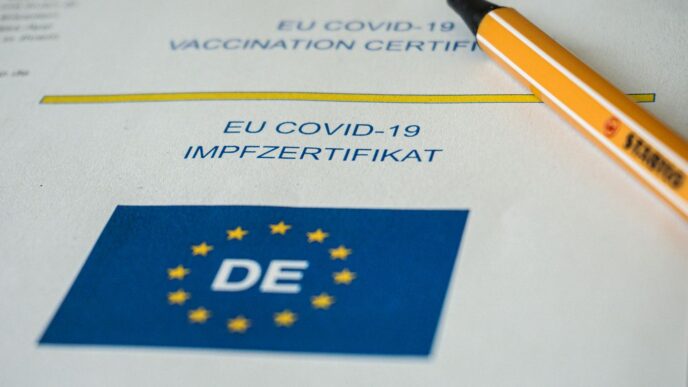Sorting out privacy policy location data requirements in 2025 isn’t exactly a walk in the park. With so many rules popping up around the world, it’s easy to feel lost. Whether you’re running a mobile app or a website, you need to know what the law expects when it comes to collecting and using people’s location info. This article breaks down what you need to include in your privacy policy, how to handle user consent, and what happens if you mess up. Let’s get into the basics so you can keep your business out of trouble and your users in the loop.
Key Takeaways
- A privacy policy must clearly explain when and how location data is collected, including what triggers the collection and what tech is used.
- You need to get clear, upfront consent from users before collecting their location data, and let them know if the app tracks them in the background.
- Your privacy policy should spell out if and how location data is shared with third parties, plus give users a way to opt out or delete their info.
- Keeping privacy policy language simple and easy to understand is not just a good idea, it’s required by laws like GDPR and CCPA.
- Failing to follow these rules can lead to legal trouble, fines, and public backlash—just ask companies like Goldenshores Technologies.
Legal Foundations of Privacy Policy Location Data Requirements
Making sense of location data privacy rules in 2025 is no small task. With new updates, stricter enforcement, and global differences, even the basics matter. Let’s break down the must-knows under key legal areas.
Federal Trade Commission Guidelines for 2025
The Federal Trade Commission (FTC) remains the key federal agency for privacy in the United States, especially for location data collected by apps and websites. While there’s no single federal privacy law, the FTC enforces consumer protection laws against unfair and deceptive practices. Over the years, cases like FTC v Goldenshores Technologies set the tone: if your app collects location data, you must be up front about it.
Key FTC requirements for 2025:
- Tell users clearly and simply when location data is being collected—no legal tricks.
- Explain if tracking happens even when the app is not in use.
- Get express consent (not just a pre-checked box) if you gather background location data.
- Make it easy for users to turn location tracking off.
A quick look at FTC expectations:
| Requirement | Example |
|---|---|
| Disclosure | "We collect your location…" |
| Just-in-time notification | Pop-up before tracking |
| Express consent | Unchecked box, clear ask |
| Opt-out option | "Turn off in Settings" |
Key Provisions of GDPR and CCPA on Location Data
The GDPR (General Data Protection Regulation) from the EU and CCPA (California Consumer Privacy Act) both put extra requirements on how location data is managed. These laws apply even if your users are only sometimes in California or the EU.
What do you need to know?
- You must inform people of what kind of location data you’re collecting, how it will be used, and who might get access to it.
- Written consent is required before collecting data that can pinpoint a person.
- Users have the right to ask for their data, get it deleted, or stop you from sharing it.
- Privacy policies must be written in plain, easy-to-read language.
Sample data rights under each:
| Right | GDPR | CCPA |
|---|---|---|
| Data access | Yes | Yes |
| Data deletion | Yes | Yes |
| Opt-out of selling | Some contexts | Yes |
| Consent required | Yes | For minors / some data |
International Standards: LGPD, PIPL, and Other Global Laws
Beyond Europe and the US, other countries have their own rules. For instance, Brazil’s LGPD, China’s PIPL, and other nations’ laws focus just as much on location privacy.
Big things to watch for:
- Consent: Most global laws need clear user agreement before collecting location data.
- Notification: Users must be told—up front—if their data is sent across borders or stored abroad.
- Equal rights: All users, not just citizens, are covered if you offer services in those countries.
Even small businesses with international customers are expected to:
- Include country-specific disclosures in their privacy policies.
- Offer translation or local-language versions for compliance.
- Respond quickly to international user requests for access or deletion.
With all these layers, the safest move is to stay honest, keep your language simple, and never rely on hidden settings. International laws are getting stricter each year, and ignoring them can lead to fines and headline-grabbing lawsuits.
Essential Disclosures in Privacy Policy Location Data Clauses
If your product, app, or service collects any location information from users, your privacy policy really needs to spell out several things. Regulators, especially after recent changes in California with enhanced location data protections, are making it clear: clear, honest disclosures are not optional.
When and How Location Data Is Collected
Almost every app or service handles this differently, so you need to tell your users whether you’re collecting location data all the time (even in the background), or only when they’re actively using your app. A completely open explanation builds trust — let users know if collection happens continuously or just at specific moments.
Here’s a simple table you might use in your policy to lay it all out:
| Collection Scenario | Collected? | User Notification |
|---|---|---|
| App is open and active | Yes | Pop-up consent |
| App is running in background | Sometimes | Policy section |
| Only for certain features | Varies | On activation |
It also matters whether location is collected just from GPS or if you use Wi-Fi, Bluetooth, or IP addresses. A couple of bullet points help summarize what you should share:
- Is location tracked when the app is closed or only when open?
- Are children’s location details included?
- What triggers collection—user actions, app events, or both?
Technologies and Methods Used for Data Collection
Getting specific about "how" shows your users what they’re agreeing to. There are a few main ways location gets grabbed:
- GPS and satellite data
- Wi-Fi connection info (like which hotspots are in range)
- Bluetooth beacons
- IP address geolocation
- Sensors in a phone (like accelerometers or cell towers)
Let your users know if you combine methods, which is common for accuracy. Some policies list all methods, others list just the key ones—either way, clarity is what the law looks for.
Third-Party Sharing of Location Information
It’s not enough to only reveal that location data is collected—people want to know who else gets it. That includes partners, advertising companies, or analytics tools. If you share with any outside group, this must be disclosed during the collection process and before sharing takes place.
Breakdown of typical third-party sharing:
- Mapping or navigation services (if you don’t do your own maps)
- Advertisers targeting by region or neighborhood
- Data analytics companies
Some apps claim they never share; if that’s really the case, say so clearly! If you use third parties, explain how much data they get—specific neighborhoods, ZIP codes, or just city-level info.
Wrapping up, every policy about location data should be honest, not just to stay safe legally, but because users expect to be kept in the loop about what’s happening with their information.
User Consent and Notification Practices for Location Data
Collecting and using someone’s location data is more than just a technical process—it’s about giving users control and keeping their trust. Here in 2025, regulators expect companies to get real consent, notify users at the right time, and let them change their minds whenever they want. Getting these steps wrong can lead to complaints, fines, and maybe a public mess you don’t want to deal with.
Obtaining Affirmative Express Consent
Before an app grabs anything about location, users need to agree. This isn’t just a checkbox buried in the signup flow. The law expects a clear, intentional action from the user before you collect any location info.
A few ways companies obtain proper consent include:
- Presenting a permission prompt right when location services are first needed, not just in the privacy policy
- Describing exactly what location data is collected and why
- Avoiding "pre-ticked" boxes—users must actively agree
- Giving a way for users to withdraw consent at any time
If you’re ever unsure, remember: specific is better than broad. "We may collect your location" is too vague. Say exactly when, why, and how.
Just-In-Time Notifications and Pop-Up Reminders
People forget what apps do in the background. That’s why regulators and app stores push for just-in-time messages. These are those pop-up notifications or banners that show up exactly when the app starts to access location info, especially for sensitive or ongoing collection in the background.
Key elements of effective notification include:
- Timing: Right before or as location data is accessed, not buried in app onboarding
- Clarity: Short, direct language—no legalese
- Interactivity: Gives the user a real choice (Allow / Don’t Allow)
- Context: Explains why the app needs this permission right now
Here’s a simple table on notification triggers:
| Scenario | Notification Type |
|---|---|
| App launched, needs location | Permission dialog |
| Background tracking enabled | Pop-up with explanation |
| Location data use changes | Push notification/update |
These reminders stop surprises and support user control.
Options for Opting In and Out of Data Collection
Giving users a way to change their mind is more than polite—it’s the law in many places now. Users should be able to switch location tracking on or off easily.
Companies usually provide options through:
- Settings menus inside the app that clearly show the status of location tracking
- Linking out to device-level privacy controls (like Android or iOS permissions)
- Offering "opt-out" links in emails or on web dashboards where location data is accessed online
A clear process helps folks feel comfortable. For example:
- Let users turn background tracking off without losing access entirely
- Clearly explain the impact of turning off location services (e.g., "Your location-based features will stop working")
- Let users delete previously collected location data or make a request for deletion
Getting user consent and giving real choices are now seen as basic requirements—not just best practices. People expect these options, and regulators enforce them. Don’t risk leaving your app’s compliance up to chance.
Transparency and Clarity in Privacy Policy Language
Writing privacy policies for location data in 2025 is about more than just covering legal bases. You can’t just bury the details in dense paragraphs—users want to know exactly what’s happening with their info. Regulations like the GDPR and CCPA call for clear, simple language. The aim here isn’t to trip anyone up, but to make sure people actually understand what you’re doing with their data.
Writing Policies in Clear and Understandable Terms
If your privacy policy feels like a legal maze or sounds like it was written for lawyers only, it’s not doing its job. Here are a few strategies you can use:
- Use everyday words. Avoid legal talk when it isn’t needed.
- Organize the info into short sections and lists, making it easy to scan.
- Add short headers so readers know what to expect in each part.
- If you use clickwrap agreements, say plainly that users agree to the terms when they sign up or check a box.
A lot of companies are responding to the push for transparency in 2025 privacy trends, focusing on language people actually use and understand.
Explaining Data Use and Retention Periods
Customers expect to know:
- Which location details you collect
- Why you collect them (e.g., personalizing services, marketing, fraud prevention)
- How long the data sticks around, and what happens when it’s no longer needed
Here’s a quick table you might find in a clear privacy policy:
| Data Type | Reason Collected | Retention Period |
|---|---|---|
| GPS Location | Navigation, ads | 2 years or until deleted |
| Wi-Fi Data | Improve features | 1 year |
| IP Address | Security/fraud check | 30 days |
This isn’t just about transparency—it helps set expectations so there are no surprises down the road.
Detailing Opt-Out and Deletion Mechanisms
Users want options if they change their minds about sharing location data. To keep things clear:
- Spell out the steps needed to delete or opt out of location tracking. Don’t make it a scavenger hunt.
- Point out any impact if a user opts out, like reduced app functionality.
- Give contact info if people need help or have questions about deleting their data.
By spelling out how you handle requests and what users can expect, you avoid confusion and show you’ve got nothing to hide. Transparency isn’t just about legal compliance—it’s about building trust and avoiding headaches for everyone involved.
Designing Privacy Policy Location Data Sections for Compliance

Privacy policies aren’t only about legal checkboxes anymore—users expect to know exactly what’s happening with their location data. If your app or service tracks where people are, you have to spell it all out in plain words. Let’s walk through how to write these sections right so you avoid mistakes and potential fines.
Step-by-Step Guidance for Mobile Apps
Building compliant location data clauses is an ongoing process. Here’s what you want to do:
- Identify the specific data you’re collecting (GPS, Wi-Fi, Bluetooth, etc.).
- Say exactly when the data is collected: at launch, in the background, only with certain features?
- Explain why you need this data. Is it for navigation, marketing, or just improving the app experience?
- Disclose any parties you’ll share the data with (marketing partners, analytics services, etc.).
- Keep these details up to date every time your data practices change. Changes in business, new feature rollouts, or even just collecting new info, all trigger a need to review your policy. Running through this checklist every so often saves headaches down the line.
Placement and Accessibility of Policy Links
Policies are worthless if users can’t find them. Make your privacy link obvious and easy to tap:
- Put your privacy policy in the footer of your app or website.
- Show a link on your app’s profile page in the app store before users download.
- Place a link during onboarding, especially when you request access to location data.
- Use pop-ups or banners for major updates so everyone knows what’s changed.
Hiding your privacy practices behind complicated menus or deep in your website isn’t just annoying—it puts you at risk for compliance issues. Clear placement means fewer complaints down the road.
Best Practices from Leading App Providers
Some companies do a solid job at privacy policies for location data. Here’s what they typically get right:
- Use direct, simple language — skip the legal jargon when possible.
- Provide easy opt-in and opt-out choices for users.
- Regularly review and update their policy as tech and laws change.
A quick comparison table for reference:
| Provider | Opt-Out Option | Update Notifications | Clear Policy Language |
|---|---|---|---|
| App A | Yes | Yes | Yes |
| App B | No | Yes | No |
| App C | Yes | No | Yes |
Try to hit all three marks: give users control, let them know when policies change, and keep everything understandable. Even companies outside of tech are stepping up, much like Virgin Galactic’s approach to transparency in the travel sector. No more hiding in the fine print.
Bottom line: keep location data sections clear, accessible, and up to date. It’s not just about ticking boxes for the law’s sake—your users actually care.
Data Security and User Rights in Location Data Policies

When it comes to location data, keeping it safe from unwanted access is a big deal. Most companies that hold this type of information lock it down using multiple security methods. Here’s a quick breakdown of what’s usually in place:
- Data encryption, both at rest and while being sent over the web
- Regular security checkups and software updates
- Limited access given only to team members who need it for their work
If your privacy policy mentions these steps clearly, it’s more likely to meet legal requirements. It’s especially important as new global laws and frameworks pop up to keep up with changing technology, which you can read more about in international regulatory updates.
Processes for Handling Government and Legal Requests
People often worry about their data falling into government hands, so privacy policies should be upfront about this. Usually, a company will only hand over someone’s location information if there’s a formal legal request, like a subpoena or court order. The usual approach goes something like this:
- Confirm the legal validity of the request (checking if it’s a real, signed order)
- Notify the user unless legally stopped from doing so
- Only provide the minimum amount of data required
Here’s a quick table showing typical company policies on data requests:
| Step | Policy Example |
|---|---|
| Review request legality | Legal team checks documents |
| Notify user | User notified unless a gag order applies |
| Limit data shared | Only share what is required |
Responding to Data Breaches and User Inquiries
No security system is perfect—sometimes things go wrong. When personal location data is breached, a strong privacy policy will have a response plan, usually including:
- Quick notification of affected users
- Steps to contain and fix the breach
- Contact information for users to ask questions or request help
Users also have the right to ask what data a company holds about them, get incorrect info fixed, or ask for their data to be deleted.
Companies need to make it simple for people to reach out—for example, by providing an email or form for privacy inquiries. If these steps are missing or poorly described, that’s a red flag and puts the company at risk for regulatory action.
Common Pitfalls and Enforcement Actions Regarding Location Data
When it comes to location data in privacy policies, companies keep tripping over the same issues, year after year. This section explores those common mistakes and enforcement actions that have shaped how we all handle location data in 2025.
Lessons from FTC v Goldenshores Technologies
The FTC v Goldenshores Technologies case is a classic example. Goldenshores, creator of the "Brightest Flashlight Free" app, was found collecting users’ location data without proper notice or real consent. The app made it look like users could refuse data collection, but in reality, data was gathered regardless of their choice.
Key regulatory requirements that came out of this case:
- Clear, up-front notices about WHEN and WHY location data is gathered.
- Real affirmative consent from users before any collection starts.
- Honest options—users should be able to say no, and the "no" should mean no data collection occurs.
You’ll find more about setting proper terms and policies (which is important for startups, not just apps) from clear terms and conditions.
Risks of Inadequate or Misleading Disclosures
If you write vague or confusing privacy language about location collection, you open yourself up to:
- User backlash (angry reviews and media coverage)
- Regulatory complaints and investigations
- Mandatory audits and costly policy overhauls
Here are pitfalls companies most often face:
- Not saying that location data is collected in the background, even when the app isn’t open.
- Failing to say IF or WHEN that data is shared with third parties.
- Using technical jargon that leaves users confused about what is happening.
Legal Consequences and Settlement Examples
Getting caught can lead to more than just warnings. There are a variety of penalties—here’s a quick overview:
| Enforcement Action | Typical Outcome |
|---|---|
| FTC consent order | Forced new disclosures, monitoring |
| Fines (varied by region) | Ranges from $50K to over $5 million |
| Mandated audits | Yearly compliance verification |
| App removal | From stores until policy updated |
Companies like Goldenshores, and others, had to make sweeping changes after enforcement. Sometimes, apps disappear from stores until they comply; other times, there’s a big public apology.
To avoid trouble, companies should:
- Tell users exactly when, why, and how location data is collected.
- Let people control their own data (opt out, delete, or see what’s stored about them).
- Keep privacy language clear and simple—no surprises.
Keeping these lessons in mind is not just about legal compliance. It’s what keeps users trusting your brand with their personal data.
Conclusion
So, after looking at all the rules and changes around location data privacy in 2025, it’s clear that things aren’t getting any simpler. If you’re building an app or running a website that collects location info, you really need to spell out what you’re doing with that data. People expect to know, and the law expects you to tell them. Make your privacy policy easy to find and easy to read. Don’t hide the details—just say when, how, and why you’re collecting location data, and who you might share it with. Give users a real choice about sharing their info. It might feel like a hassle, but it’s better than dealing with complaints or legal trouble later. Privacy rules will probably keep changing, so it’s smart to check your policy every so often and update it if you need to. In the end, being upfront about location data is just part of running a trustworthy business in 2025.
Frequently Asked Questions
Why do I need a privacy policy if my app collects location data?
You need a privacy policy because it’s required by law if you collect any personal information, including location data. It also helps users understand what data you collect and how you use it.
How should I tell users that my app collects their location?
You should clearly explain in your privacy policy when and how you collect location data. It’s also a good idea to use pop-up messages or notifications to let users know before you start collecting their location.
Do I have to get permission before collecting location data?
Yes, you must get clear permission, called ‘affirmative express consent,’ before you collect location data. This means users must agree before you start tracking their location.
What should I include about third-party sharing in my privacy policy?
You should say if you share location data with other companies or partners. Be clear about who gets the data and why, so users know what happens to their information.
How can users stop my app from collecting their location?
Your privacy policy should explain how users can turn off location tracking or delete their data. This could be through app settings or by contacting your support team.
What happens if I don’t follow the rules about location data?
If you don’t follow the rules, you could face legal trouble, including fines or lawsuits. There have been cases where companies were punished for not telling users about location tracking or for not getting proper consent.














